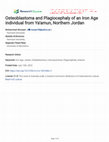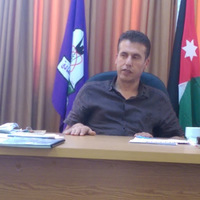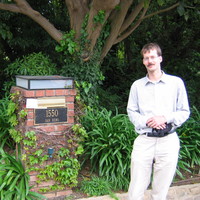Papers by Abdulla Ahmad Mahmoud Al-Shorman
Medical Research Journal, Nov 13, 2023
This study examines the indispensable role of forensic entomology in scientifically estimating th... more This study examines the indispensable role of forensic entomology in scientifically estimating the post-mortem interval (PMI) and thus aiding court convictions. This case study estimated the PMI of a female corpse that was found in an advanced stage of decomposition in an apartment in Amman, Jordan (Archives of Qararak database of the Jordanian Bar Association). In contrast to the perpetrator's alleged PMI of 19 days, the analysis of the entomological data suggests a minimum PMI of 10 days. This result does not support a conviction for assault leading to death but intentional homicide. This case study assures the potential of forensic entomology in criminal investigations in Jordan.

Journal of Tourism Research and Hospitality, 2016
Middle Eastern Political Instability and Jordan’s Tourism Abstract Although Jordan’s tourism reve... more Middle Eastern Political Instability and Jordan’s Tourism Abstract Although Jordan’s tourism revenue contributes to the GDP, it fluctuates as political instability events hit the region. Therefore, this study examined nine major political impacts that took place during the period from 1990-2014 to address their impacts on tourism. The study utilized the annual number of tourists (international and Arab) and the annual percentage tourism’s share to GDP to statistically examine the relationship between the occurrence of these events and the number of tourists as well as tourism’s GDP share. The hypotheses of the study were tested using a 2-years moving average, Pearson’s correlation coefficient and Student’s t-test. The results show that the number of international tourists and the percentage of GDP decreased during an event, while the number of Arab tourists increased pointing to resilience. The effect of political instability on tourism activities is temporary and confound to less than a year after an event.

Research Square (Research Square), Jul 13, 2022
Little is known about the skeletal biology of the Iron Age inhabitants in Jordan, where this stud... more Little is known about the skeletal biology of the Iron Age inhabitants in Jordan, where this study comes to contribute to the previously described diseases of the same period. A single Iron Age skeleton that was unearthed at the site of Ya'amun in northern Jordan is presented. The subject was a male who died at the age of about 30 years old. Paleopathological investigations were performed using anthroposcopy and radiography. The analyses revealed many pathological lesions, including osteobalsoma of the right femur, craniosysntosis, plagiocephaly, asymmetry of the sacrum, fractures of the vertebrae, anemia, and osteoarthritis. This case marks the rst example of neoplasm and plagiocephaly in the Iron Age of Jordan. Although the individual had survived serious health problems, he reached his third decade enduring intense daily activities representing the challenging living and subsistence conditions during the Iron Age.
Jordan Journal for History and Archaeology, Jul 11, 2010
Archaeological bone chemistry studies from Jordanian sites have overlooked the important role of ... more Archaeological bone chemistry studies from Jordanian sites have overlooked the important role of bone diagenesis, which may rule out proper interpretation of data. This study evaluates bone diagenesis in 81 human and animal bone samples from four Byzantine sites in northern Jordan. The evaluation of diagenesis was structured on the deviations of bone chemistry from a set of standards using XRD, XRF, and AAS. The results show significant diagenesis in the four sites, which consequently biases reconstructions of paleodiet using trace element analysis. The study also shows that burial type and environment are major factors in the process of diagenesis.
Near Eastern Archaeology, Mar 1, 2010
... New York: Taylor & Francis. Testing the Function of Early Bronze Age I Dolmens: A GIS Inv... more ... New York: Taylor & Francis. Testing the Function of Early Bronze Age I Dolmens: A GIS Investigation Abdulla Al-Shorman ... Next, a Kolmogorov-Simirnov (KS) test examined the dolmen's distribution pattern as clustered or dispersed. ...
Trends in Applied Sciences Research, 2006
Oxford University Press eBooks, Jun 7, 2012
Dirasat: Human and Social Sciences, Dec 30, 2018
دراسات: العلوم الانسانية و الاجتماعية, Aug 30, 2010
To investigate the paleodiet of the inhabitants of Queen Alia International Airport (a 3 rd centu... more To investigate the paleodiet of the inhabitants of Queen Alia International Airport (a 3 rd century AD site in Middle Jordan), the concentration of Ca, Sr, and Zn were analyzed in 22 samples from the ribs of 22 human skeletons. Ten more soil samples from 10 graves were also analyzed. The concentrations of Sr, Ca and Zn were measured using the Atomic Mass Absorption method at the laboratories of the Faculty of Archaeology and Anthropology, Yarmouk University. The correlation coefficient and the standard deviation statistics of the results pointed to little if any soil/bone exchange of the above elements and also indicated homogenous soil samples. The results show that the inhabitants at QAIA consumed both protein and plant food with no discrimination.
Journal of the Canadian Society of Forensic Science, 2012
Abstract Contrary to the strong belief among medical examiners and pathologists in Jordan that al... more Abstract Contrary to the strong belief among medical examiners and pathologists in Jordan that all mummified human remains are archaeological, and thus, do not necessitate forensic examination, this Jafr mummy is recent as evidenced by radiocarbon dating. The visual and radiographic examinations showed multiple skull and chest fractures as well as lacerations and cut wounds in various parts of the body. These types of trauma were likely caused by blunt forces applied at multiple sites of the body, typical of those produced in traffic accidents. The entomological evidence suggests a delayed inhumation of at least two days after death.

The Jordanian Museum of Cultural Heritage houses the oldest human skeleton unearthed in Jordan; R... more The Jordanian Museum of Cultural Heritage houses the oldest human skeleton unearthed in Jordan; Radiocarbon analysis revealed a date of approximately 16000 years BP. The purpose of the study is to reconstruct the biology and way of life of an individual who lived in an era that is still ignored by archaeologists in the region. The methods of the reconstruction include bioarchaeological investigation, XRD, XRF, FTIR, pH meter, and microbiology. The reults indicate a 31-years-old male with an estimated height of about 172.4-175.2 cm. The bone pathology on the vertebrae and long bones suggests that the individual endured hard daily life activites. His teeth showed oblique dental wear that is attributed to using them as tools. The cause of death was probably due to a blunt force trauma to the left side of the skull. The bone analyses using XRD, XRF, FTIR, and pH meter ruled out bone diagenesis, which nominate the skeleton for further chemical analyses. The microbiological tests revealed...
Anthropologischer Anzeiger, 2019
This study examined buccal microwear from the Byzantine sites of Yajuz and Sa'ad in Jordan (n... more This study examined buccal microwear from the Byzantine sites of Yajuz and Sa'ad in Jordan (n = 15) to assess different subsistence economies. An Indian Hindu sample (n = 7) was used for comparative purposes. The results show no differences in the pattern of buccal dental microwear between the two Byzantine sites, while a difference was noted when these sites were compared to Hindus. It is probable that cultural variation was the cause of buccal microwear differences between the temporally located sites. Although the economies during the Byzantine period were diversified, technological adaptation spread into region during the Byzantine period , which eased food accession and processing.
British Journal of Education, Society & Behavioural Science, 2016
Mediterranean Archaeology …, 2010
... In ancient times, Gadara strategic location linked a number of key trading routes connecting ... more ... In ancient times, Gadara strategic location linked a number of key trading routes connecting Syria and Palestine. ... 5. Results of the GIS Modeling ... of the 14 meteorological stations; the interpolated layers of Temperature (b); Rela-tive humidity (c); Rainfall (d); Wind speed (e); and (f ...
Jordan Journal For History and Archaeology, Nov 7, 2010

Journal of Convention & Event Tourism, 2017
ABSTRACT Due to the continuous and rapid expansion of conference tourism and its paramount role i... more ABSTRACT Due to the continuous and rapid expansion of conference tourism and its paramount role in the economic growth of the host countries like Jordan, this study comes to track the geographic distribution of conferences for the years 2014–2016. The main goal of the study is to direct the locations of future conferences to less favored areas that are marginalized and poor. Spatial statistics and Geographic Information System Predictive Modeling (GISPM) are used to calculate the potential locations of conferences based on predefined criteria. The results indicate that the current locations of most of the conferences are concentrated in the northern and middle parts of the country. The GISPM results recommend the eastern and southern locations taking into consideration the socioeconomic development of host communities. The study offers other recommendations addressing managers, event planners, event organizers, conference stakeholders, and the enterprises as well as academic researchers in tourism planning and development.
Dental Anthropology Journal, 2014
This study scanned 14 buccal surfaces of teeth casts microscopically from the Byzantine sites of ... more This study scanned 14 buccal surfaces of teeth casts microscopically from the Byzantine sites of Yajuz and Sa'ad in Jordan, and 7 samples from the Natufian site of El Wad in Palestine for the purpose of studying buccal microwear. The results show no differences in the pattern of dental microwear between the two byzantine sites, while a difference was existed when these sites com-pared to El Wad. The results indicate that subsistence economy did not trigger buccal microwear but cultural development. Although the economies during the Byzantine period were diversified, technological adaptation diffused into region, which eased food accession and procession.











Uploads
Papers by Abdulla Ahmad Mahmoud Al-Shorman